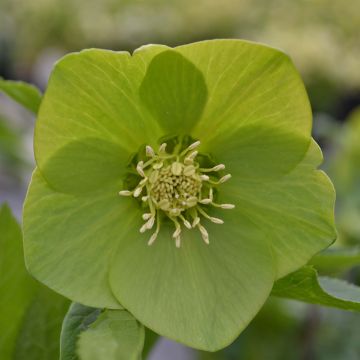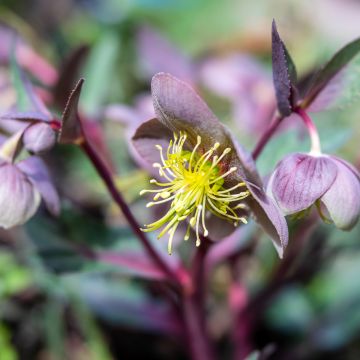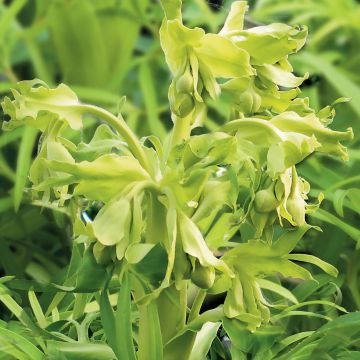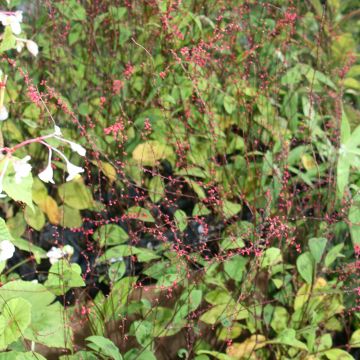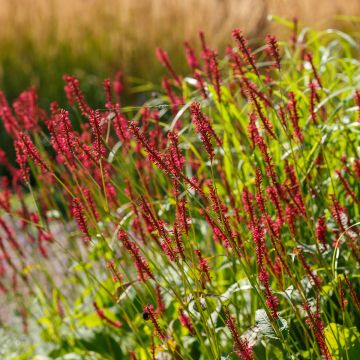

Helleborus argutifolius


Helleborus argutifolius


Helleborus argutifolius


Helleborus argutifolius


Helleborus argutifolius


Helleborus argutifolius


Helleborus argutifolius
Helleborus argutifolius
Helleborus argutifolius
Corsican Hellebore, Holly-leaved Hellebore
Why not try an alternative variety in stock?
View all →This plant carries a 12 months recovery warranty
More information
We guarantee the quality of our plants for a full growing cycle, and will replace at our expense any plant that fails to recover under normal climatic and planting conditions.
From €5.90 for pickup delivery and €6.90 for home delivery
Express home delivery from €8.90.
From €5.90 for pickup delivery and €6.90 for home delivery
Express home delivery from €8.90.


Does this plant fit my garden?
Set up your Plantfit profile →
Description
Helleborus argutifolius, also known as Corsican Hellebore, is a Mediterranean species well adapted to hot and dry climates, perfect for bringing light to the edge of the undergrowth. Undoubtedly the largest of its genus, this Hellebore is a beautiful evergreen perennial, producing astonishing pistachio green flowers in dense leafy floral spikes during the winter. Hardy down to -12/-15°C (10.4/5°F), this slightly tender species is not afraid of competing with the roots of large trees and self-seeds where it pleases, in deep and loose soil, slowly colonizing deciduous or evergreen undergrowth.
Native to Corsica and Sardinia, Helleborus argutifolius is a perennial plant of the buttercup family that hybridizes very easily with other species such as Helleborus niger, the Christmas Rose, to give, through random sowings, hybrids called "Nigercors", both charming and particularly easy to cultivate. The Corsican Hellebore is a very robust plant, long-lived but moderately hardy, which tolerates summer drought well. In the Mediterranean area, it grows in the mountains in copse covering slopes and in ravines at high altitudes. It is capable, under favourable conditions, of reaching a height of 1.5m (5ft) or more. In cultivation, it typically forms a clump about 60cm (24in) high and 70cm (28in) wide. It is composed of leafy stems. The leaves, all cauline, are tough, palmate (resembling a bird's foot), divided into 3 lobes with toothed and spiny edges, of a dark green colour.
Between January and March, 10 to 30 single flowers measuring 3 to 5cm (1 to 2in) in diameter appear at the top of each stem. These are cup-shaped flowers, inclined downwards, whose sepals sometimes turn upside down at the end of flowering. Their colour varies from pistachio green to creamy white-green. If they are inclined downwards, allowing water to slide off like an umbrella, it is to protect the heart of the flower from rotting. Hellebores are a bushy plant. It does not like to be moved once established, with young plants sometimes taking 2 years to flower. The seeds, which are formed abundantly, are sown in April-May by ants. They germinate easily after the cold of the following winter.
Use Hellebores like elements of an ancient tapestry, mixing them with understorey plants in brighter colours. This Corsican Hellebore, a Mediterranean version of Christmas roses and Lenten roses, allows gardeners in dry and hot climates to adopt this species without fear of it dying of thirst. It can be planted in groups, like a bouquet, near the entrance of the house, in shaded areas, to enjoy its bright and early flowering up close. It is an excellent plant for illuminating a shaded area, for example at the edge of a grove or undergrowth, in the company of Euphorbia amygdaloides, Geranium macrorrhizum, Glechoma hederacea, Algerian Iris or small periwinkles, for example.
Report an error about the product description
Helleborus argutifolius in pictures


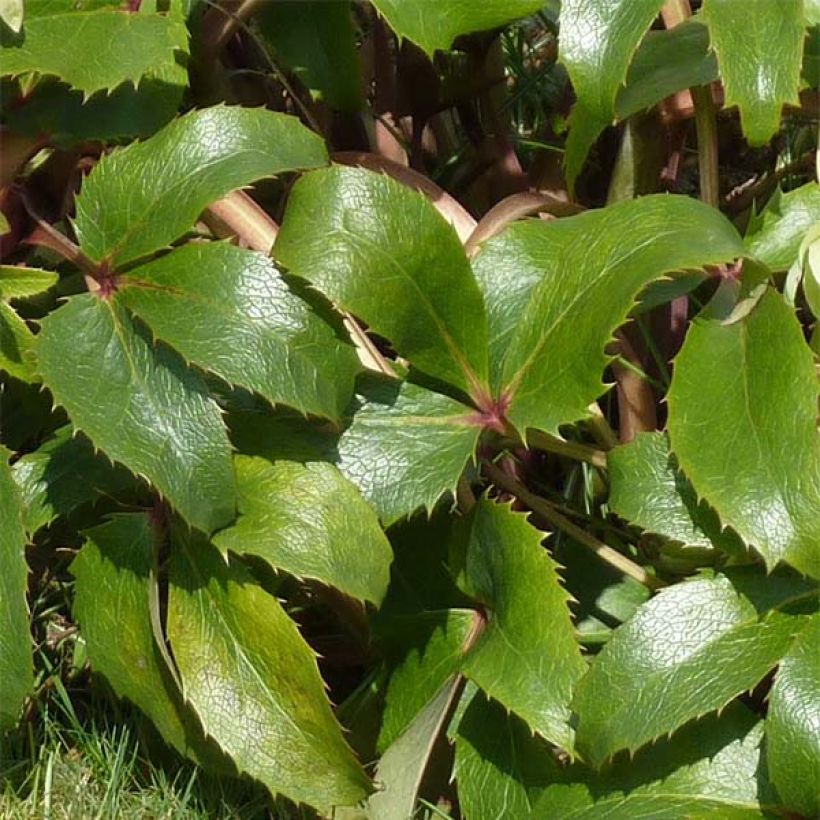



Flowering
Foliage
Plant habit
Botanical data
Helleborus
argutifolius
Ranunculaceae
Corsican Hellebore, Holly-leaved Hellebore
Cultivar or hybrid
Other Hellebore A to Z
Planting and care
Corsican Hellebore grows in any neutral to calcareous soil, preferably deep and loose, in partial or light shade, while being sheltered from cold and dominant winds. In cold climates, special care should be taken to reserve the most sheltered exposures from the cold, without scorching sun. Further south, once well established, it will completely do without watering in summer. This perennial is planted in early autumn in mild climates, and in spring in cooler climates. It thrives in deeply worked soil mixed with leaf compost. Water the plants well after planting and then add a layer of mulch 2 to 5cm (1 to 2in) thick. Regularly remove faded leaves to improve flowering. Make sure to maintain a planting distance of 40 to 50cm (16 to 20in) between each plant to promote their growth. Corsican Hellebore does not tolerate heavy frosts or stagnant water that can cause its roots to rot.
It can be propagated by sowing fresh seeds in April-May. The seeds will only germinate after the passage of the winter cold.
Planting period
Intended location
Care
-
, onOrder confirmed
Reply from on Promesse de fleurs
Shade-loving perennials
Haven't found what you were looking for?
Hardiness is the lowest winter temperature a plant can endure without suffering serious damage or even dying. However, hardiness is affected by location (a sheltered area, such as a patio), protection (winter cover) and soil type (hardiness is improved by well-drained soil).

Photo Sharing Terms & Conditions
In order to encourage gardeners to interact and share their experiences, Promesse de fleurs offers various media enabling content to be uploaded onto its Site - in particular via the ‘Photo sharing’ module.
The User agrees to refrain from:
- Posting any content that is illegal, prejudicial, insulting, racist, inciteful to hatred, revisionist, contrary to public decency, that infringes on privacy or on the privacy rights of third parties, in particular the publicity rights of persons and goods, intellectual property rights, or the right to privacy.
- Submitting content on behalf of a third party;
- Impersonate the identity of a third party and/or publish any personal information about a third party;
In general, the User undertakes to refrain from any unethical behaviour.
All Content (in particular text, comments, files, images, photos, videos, creative works, etc.), which may be subject to property or intellectual property rights, image or other private rights, shall remain the property of the User, subject to the limited rights granted by the terms of the licence granted by Promesse de fleurs as stated below. Users are at liberty to publish or not to publish such Content on the Site, notably via the ‘Photo Sharing’ facility, and accept that this Content shall be made public and freely accessible, notably on the Internet.
Users further acknowledge, undertake to have ,and guarantee that they hold all necessary rights and permissions to publish such material on the Site, in particular with regard to the legislation in force pertaining to any privacy, property, intellectual property, image, or contractual rights, or rights of any other nature. By publishing such Content on the Site, Users acknowledge accepting full liability as publishers of the Content within the meaning of the law, and grant Promesse de fleurs, free of charge, an inclusive, worldwide licence for the said Content for the entire duration of its publication, including all reproduction, representation, up/downloading, displaying, performing, transmission, and storage rights.
Users also grant permission for their name to be linked to the Content and accept that this link may not always be made available.
By engaging in posting material, Users consent to their Content becoming automatically accessible on the Internet, in particular on other sites and/or blogs and/or web pages of the Promesse de fleurs site, including in particular social pages and the Promesse de fleurs catalogue.
Users may secure the removal of entrusted content free of charge by issuing a simple request via our contact form.
The flowering period indicated on our website applies to countries and regions located in USDA zone 8 (France, the United Kingdom, Ireland, the Netherlands, etc.)
It will vary according to where you live:
- In zones 9 to 10 (Italy, Spain, Greece, etc.), flowering will occur about 2 to 4 weeks earlier.
- In zones 6 to 7 (Germany, Poland, Slovenia, and lower mountainous regions), flowering will be delayed by 2 to 3 weeks.
- In zone 5 (Central Europe, Scandinavia), blooming will be delayed by 3 to 5 weeks.
In temperate climates, pruning of spring-flowering shrubs (forsythia, spireas, etc.) should be done just after flowering.
Pruning of summer-flowering shrubs (Indian Lilac, Perovskia, etc.) can be done in winter or spring.
In cold regions as well as with frost-sensitive plants, avoid pruning too early when severe frosts may still occur.
The planting period indicated on our website applies to countries and regions located in USDA zone 8 (France, United Kingdom, Ireland, Netherlands).
It will vary according to where you live:
- In Mediterranean zones (Marseille, Madrid, Milan, etc.), autumn and winter are the best planting periods.
- In continental zones (Strasbourg, Munich, Vienna, etc.), delay planting by 2 to 3 weeks in spring and bring it forward by 2 to 4 weeks in autumn.
- In mountainous regions (the Alps, Pyrenees, Carpathians, etc.), it is best to plant in late spring (May-June) or late summer (August-September).
The harvesting period indicated on our website applies to countries and regions in USDA zone 8 (France, England, Ireland, the Netherlands).
In colder areas (Scandinavia, Poland, Austria...) fruit and vegetable harvests are likely to be delayed by 3-4 weeks.
In warmer areas (Italy, Spain, Greece, etc.), harvesting will probably take place earlier, depending on weather conditions.
The sowing periods indicated on our website apply to countries and regions within USDA Zone 8 (France, UK, Ireland, Netherlands).
In colder areas (Scandinavia, Poland, Austria...), delay any outdoor sowing by 3-4 weeks, or sow under glass.
In warmer climes (Italy, Spain, Greece, etc.), bring outdoor sowing forward by a few weeks.



































